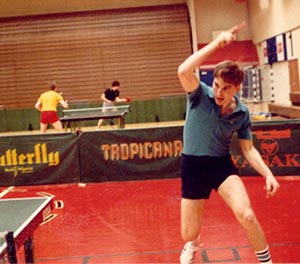Tip of the Week
Top Ten Things to Remember in Doubles.
2020 USA Olympic Selection Procedures
The 2020 Olympic Games Athlete Selection Procedures went live a month ago on the USATT Selection Procedures page. Although I'm on the board of directors for USATT, that was the first time I saw them. They were created by the USATT High Performance Committee (HPC) and the USATT High Performance Director (HPD).
They are our designated experts on these topics, and so in most cases, even though I would probably be considered an "expert" on these topics as well, I normally defer to them on these matters. However, in the case of the procedures planned for choosing USA table tennis players for the 2020 Olympics, I simply can't agree.
The procedures are a bit complex. However, in simple terms, the most likely scenario is that we will have six Olympic spots, with a committee selecting 4 of those 6 spots, and the other two spots going to the winners of the Olympic Trials (one man, one woman). The committee that would choose the rest of the team would be made up of the HPD; the chair of the HPC; two USA National Team Coaches; and one of the Athlete Representatives on the USATT board of directors.
To get all six spots, USA has to beat Canada in an upcoming team match, one for men, one for women. (I'm assuming no USA player will prequalify, which would mean reaching top 25 in world rankings or the quarterfinals of men's or women's singles at the upcoming Worlds.)


 Photo by Donna Sakai
Photo by Donna Sakai


